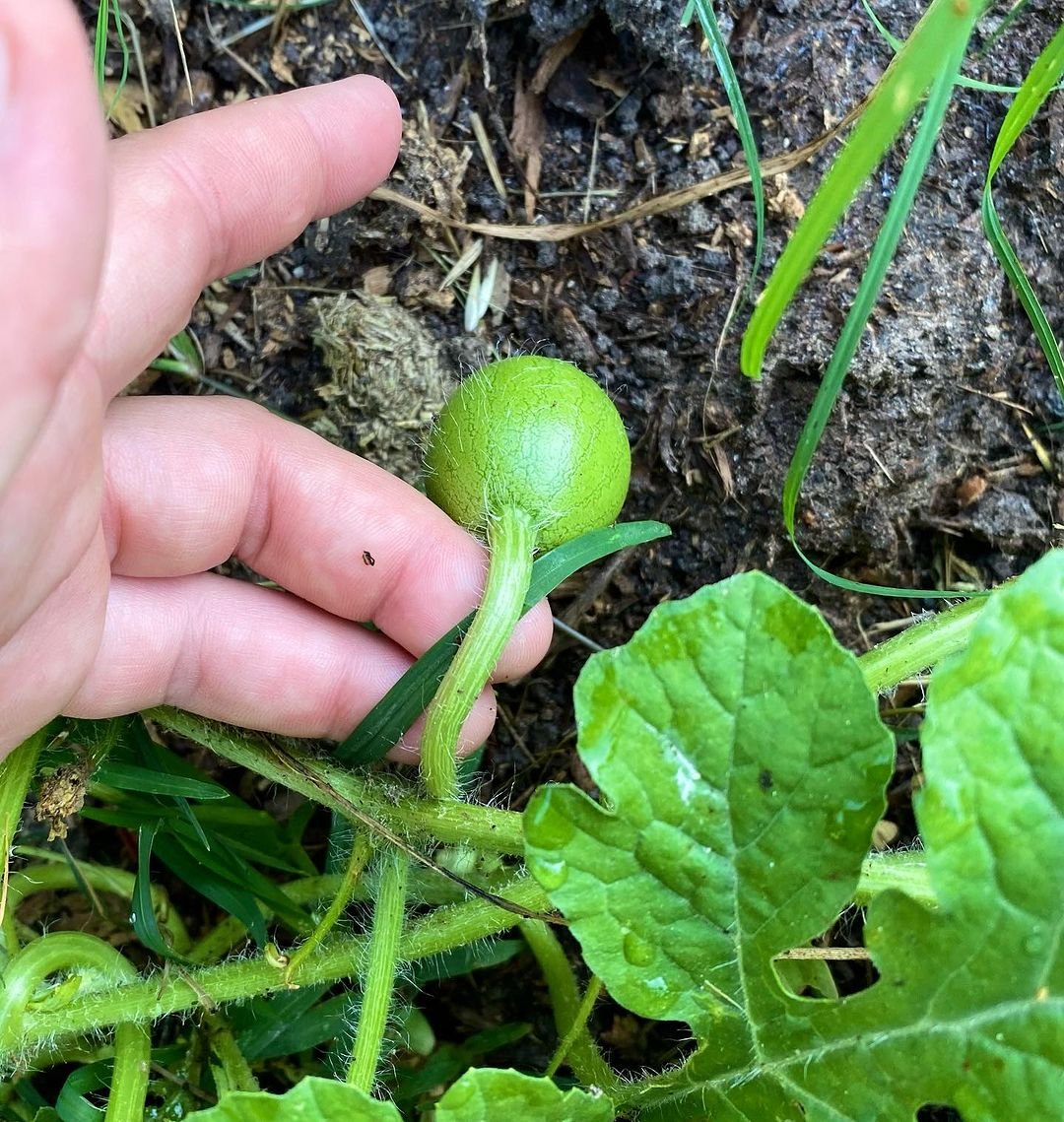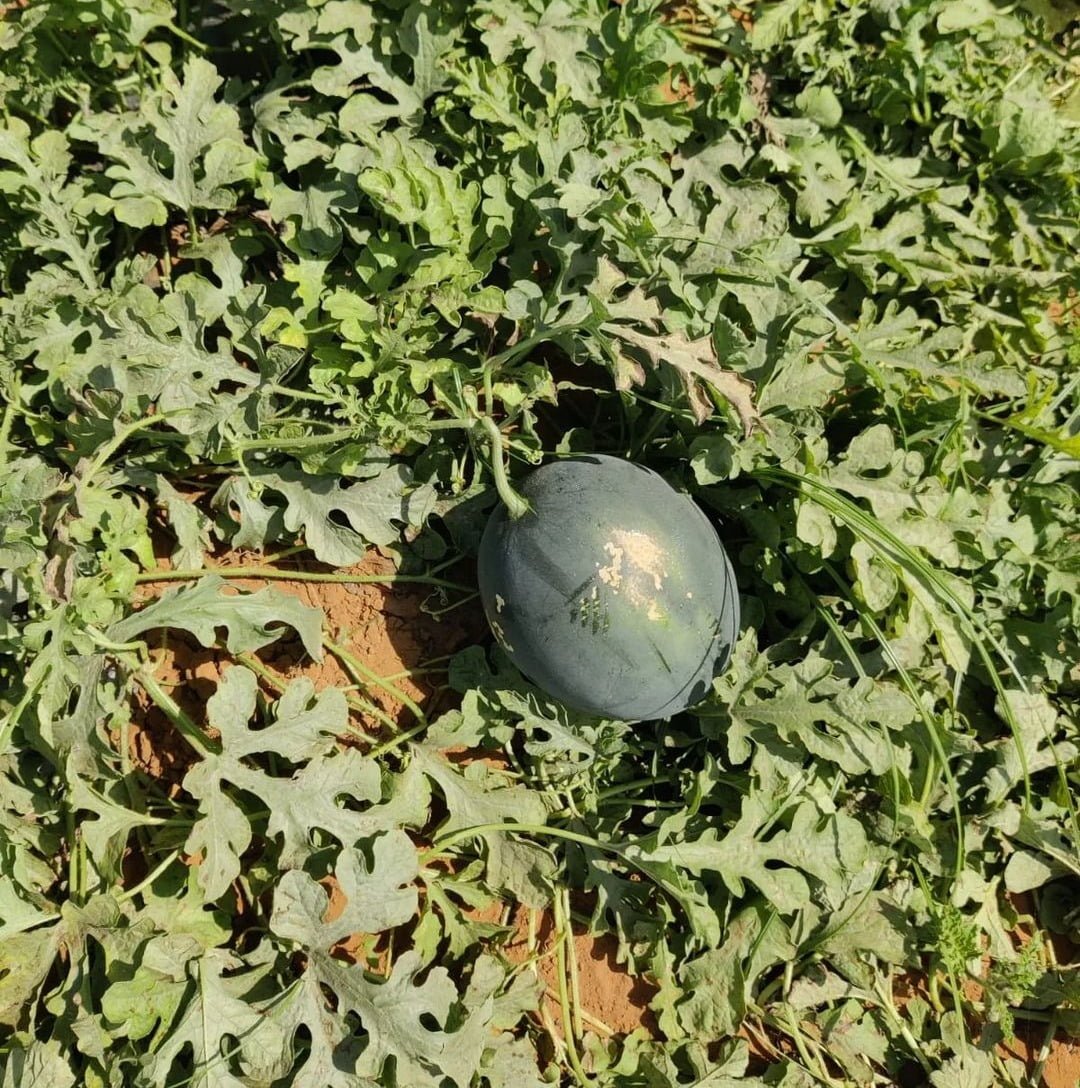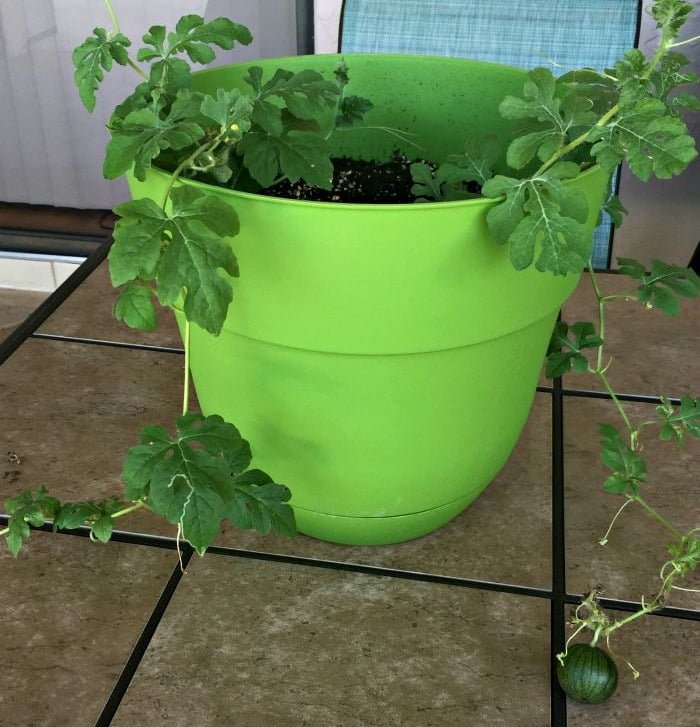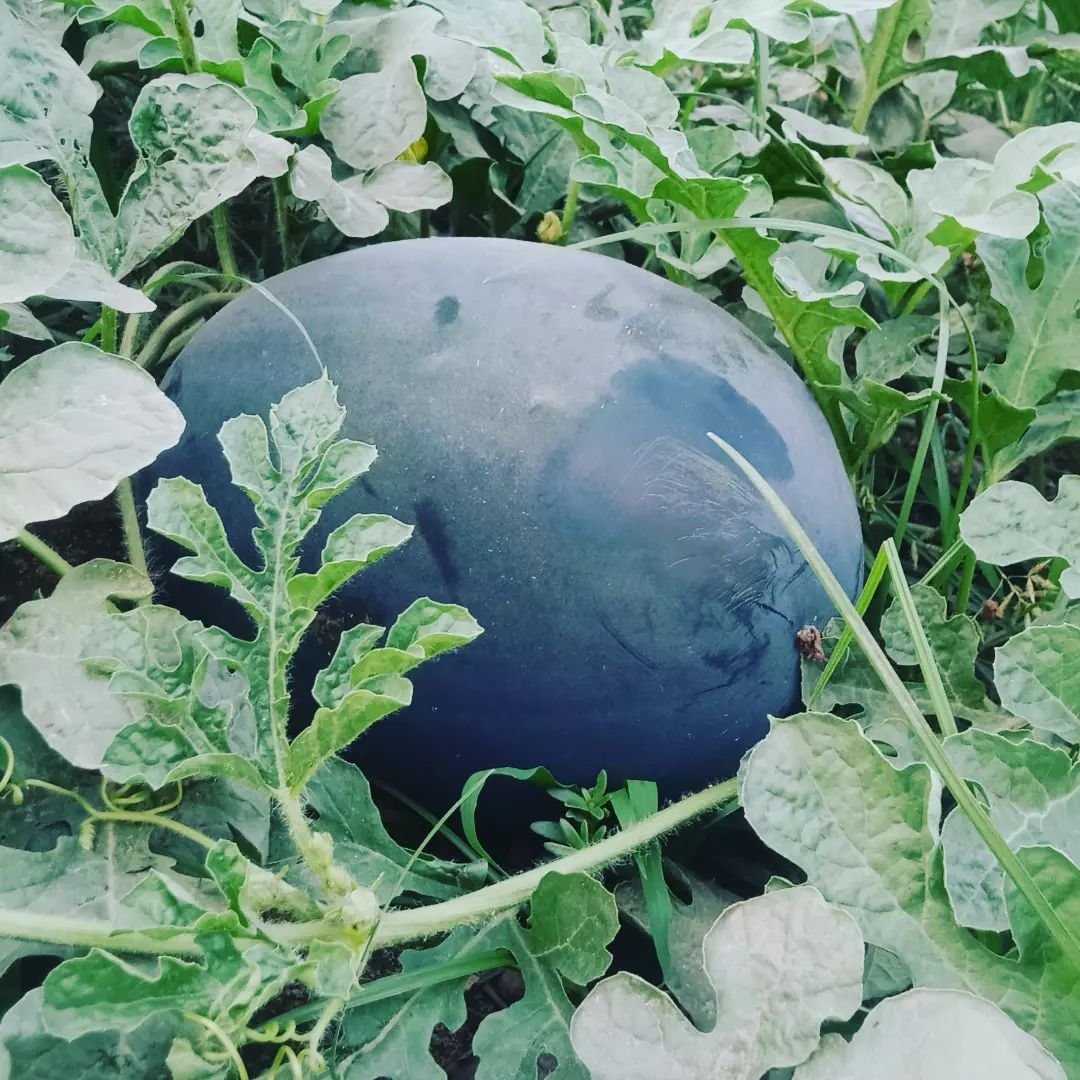If you’re looking to embark on a journey of cultivating Black Diamond Watermelons, you’re in for a delightful treat. The Black Diamond Watermelon is not just distinct in appearance but also offers a mouthwatering and refreshing taste that’s hard to resist. In this comprehensive guide, we’ll provide you with clear, step-by-step instructions on how to successfully grow these visually striking and delectable fruits right in your own garden.
The Art of Growing Watermelon Excellence
Black Diamond Watermelon: A Visual and Tasty Delight

Here’s a concise chart with information about Black Diamond Watermelon:
| Attribute | Information |
|---|---|
| Botanical Name | Citrullus lanatus |
| Plant Type | Annual |
| Soil Type | Well-draining, fertile |
| Color Varieties | Dark green rind, red flesh |
| Zones | N/A (typically grown as an annual) |
| Exposure | Full sun |
| Harvest Time | Late summer to early fall |
| Size | Large, can weigh up to 50 pounds |
| Flavor | Sweet and juicy |
The Black Diamond Watermelon, scientifically known as Citrullus lanatus ‘Black Diamond’, boasts a unique and captivating appearance. Its dark green rind, often resembling a deep shade of black, exudes a glossy finish, making it a head-turner in any garden. This fruit is renowned for its substantial size, with some specimens weighing between 20 and 50 pounds, although smaller varieties are also available.
When you slice open a Black Diamond Watermelon, you’re greeted with deep red, juicy flesh that’s visually appealing and tantalizing to the taste buds. These watermelons are known for their inherent sweetness, complemented by a hint of natural watermelon tartness.
Versatile in Use
Black Diamond Watermelons find their way into various culinary applications. They are commonly enjoyed fresh, serving as a refreshing and wholesome snack. You can also incorporate them into fruit salads to elevate your summertime dining experience. Their large size makes them ideal for sharing at picnics, parties, and gatherings. For a creative twist, consider grilling them or using them as a base for watermelon-based beverages and sorbets.
Propagating Black Diamond Watermelon

To ensure the successful growth of Black Diamond Watermelon, follow these key steps:
- Select Fresh and Viable Seeds: Begin by obtaining Black Diamond Watermelon seeds from a reputable source. Fresh and viable seeds are essential for successful germination.
- Soak the Seeds: Soak the seeds in warm water for approximately 24 hours. This step softens the seed coat and enhances germination rates. After soaking, drain the water and allow the seeds to dry slightly.
- Prepare the Seed Trays or Pots: Fill seedling trays or pots with a high-quality seed-starting mix or peat pellets. Lightly moisten the soil before planting the seeds.
- Plant the Seeds: Plant each watermelon seed about 1 inch deep into the soil, spacing them 2-3 inches apart in the tray or one seed per pot. Cover the seeds with soil and gently firm it down.
- Provide Optimal Conditions: Place the seed trays or pots in a warm location with a temperature range between 75°F and 85°F. Keep the soil consistently moist, avoiding overwatering, as excessive moisture can lead to damping-off or root rot.
Black Diamond Watermelon seeds typically germinate within 7-10 days, but it can take up to 2 weeks. Keep a close watch on soil moisture and provide ample light for healthy seedling growth.
Outdoor Planting and Container Gardening

Whether you have a spacious garden or limited space, you can successfully grow Black Diamond Watermelons. Here’s how:
Outdoor Planting
- Choose a sunny location in your garden with well-draining soil.
- Space the watermelon plants according to the recommendations for Black Diamond Watermelon, typically around 3-4 feet apart in rows with about 6-8 feet between rows.
- Black Diamond Watermelon plants are sprawling vines that benefit from trellises or supports to keep the fruit off the ground. Consider using stakes or trellises to support the vines as they grow.
Growing Black Diamond Watermelon in Pots

If you’re short on garden space, don’t fret; you can still enjoy the bounty of Black Diamond Watermelons by growing them in containers. Ensure that your pots are at least 24-28 inches in size.
To make the most of your limited space, provide support for the watermelon vine to climb. Use a trellis or stakes to train the vines vertically. This not only saves space but also prevents the fruit from sitting directly on the ground, reducing the risk of rot and pest infestations.
Requirements for Growing Black Diamond Watermelons

To achieve a successful harvest of Black Diamond Watermelons, it’s crucial to meet their specific requirements:
Location
Adequate sunlight is paramount for Black Diamond Watermelons. These plants require a minimum of 6 to 8 hours of daily sunshine to ensure robust growth and development.
Soil
Black Diamond Watermelons thrive in loamy soil that is loose, well-draining, and fertile. Loamy soil consists of a balanced mixture of sand, silt, and clay, providing good drainage while retaining sufficient moisture for plant growth. Enhance the soil’s fertility and moisture-holding capacity by incorporating organic matter such as compost, well-rotted manure, or aged leaf mold. Maintain a slightly acidic to neutral soil with a pH range of 6.0 to 7.0.
Water
Consistent moisture is essential for watermelons, especially during the growing season. Provide deep and thorough watering, ensuring that the root zone remains adequately moistened. On average, watermelons require about 1-2 inches of water per week, but adjust this based on climate, soil conditions, and growth stage. Check soil moisture by inserting your finger or a moisture meter near the plant’s base and water when the top 1-2 inches of soil feels dry. Watering in the morning is generally advisable, allowing the foliage to dry during the day and reducing the risk of fungal diseases.
Temperature
Black Diamond Watermelons thrive in temperatures ranging from 70°F to 90°F during their growth and fruit development stages. Warmer temperatures promote vigorous growth, flowering, and high-quality fruit.
Fertilizer
Before planting Black Diamond Watermelons, incorporate a balanced fertilizer (10-10-10 or 20-20-20) into the soil at a rate of 2-3 pounds per 100 square feet of garden bed. As the watermelons continue to grow, feed them with a balanced liquid fertilizer, diluted to half its strength, every 2-3 weeks. If you prefer organic options, well-rotted compost, aged manure, or organic vegetable fertilizers are excellent choices. Always follow the package instructions.
Pests and Diseases
When cultivating Black Diamond Watermelons, vigilance is key to preventing common pests and fungal diseases. Watch out for melon aphids, cucumber beetles, squash bugs, and squash vine borers. Similarly, be on the lookout for fungal diseases like powdery mildew, Alternaria leaf spot, stem blight, and downy mildew. Avoid overwatering and wetting the foliage to mitigate these issues. To minimize the risk of infestation and disease, refrain from planting watermelons where other cucurbit or squash family plants were grown in the previous year.
Harvesting Black Diamond Watermelons

The moment of harvest is a satisfying culmination of your efforts. To determine if your Black Diamond Watermelons are ready for picking, consider these indicators:
- Rind Color: Pay attention to the color of the rind. Most watermelons are ready for harvest when the rind transitions from a shiny surface to a dull or matte finish. For instance, a watermelon with a green rind may exhibit a yellowish or cream-colored hue when fully ripe.
- Sound Test: Give the watermelon a gentle tap or thump with your knuckles. A ripe watermelon will produce a deep, hollow sound, indicating that it’s packed with water and has matured properly.
- Size and Weight: While the size of Black Diamond Watermelons can vary based on the variety, a ripe one should feel weighty for its size, signifying that it’s reached its peak.
- Taste Test: If you’re uncertain about the ripeness, slice a small piece from the Black Diamond Watermelon and savor it. A ripe watermelon will deliver a sweet, juicy flavor, confirming that it’s ready for harvest.
By keeping an eye on these indicators, you’ll ensure that you pick your Black Diamond Watermelons at the perfect stage of ripeness, guaranteeing the best flavor and texture.
Cultivating Black Diamond Watermelons can be a gratifying endeavor, offering both a visually striking addition to your garden and a delicious treat for your palate. With the right care and attention to detail, you can successfully grow these impressive watermelons in your own space, whether you have a sprawling garden or limited room for containers.
Remember the essential elements for success: optimal sunlight, well-draining loamy soil, consistent moisture, and suitable temperatures. Additionally, provide the necessary support for the vines, monitor for pests and diseases, and follow proper harvesting guidelines.
Pingback: Pink Pineapple: A Sweet and Surprising Delight!
Pingback: How to Grow and Care for Forest Pansy Redbud Trees -
Pingback: Guide to Keeping Calathea Plants Healthy and Gorgeous
Pingback: Complete Guide to Growing Dragon Fruit Plants at Home -
Pingback: How to Grow and Care for Watermelon -
Pingback: Top 12 Non-Toxic and Low Maintenance Pet-Friendly Houseplants for Your Home - Gardener's School
Pingback: Grape Varieties : A Comprehensive Guide - Gardener's School
Pingback: How to Grow and Care for Lucky Bamboo Indoors - Gardener's School